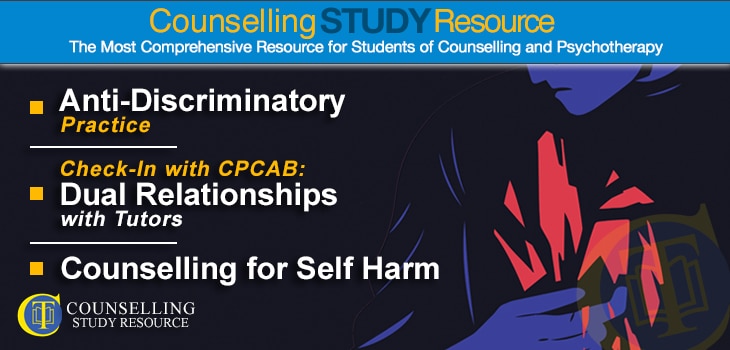Counselling for Self-Harm (starts at 27.15 mins)
Ken and Rory look at what self-harm is – although this tends to be viewed as specific behaviours such as cutting and burning oneself, it can present in many other forms.
For example, Rory describes a rugby player who purposely got himself injured during matches. Substance misuse may also be a type of self-harm.
Self-harm tends to be a way of using physical pain to distract oneself from emotional pain. It is not the same as suicidal behaviour – those who self-harm generally want to live – but a high proportion of people who do attempt suicide have self-harmed in the past.
Self-harm often takes on a cyclical pattern, with people feeling shame, remorse and guilt immediately after self-harming, but then the stresses building again to trigger a further episode.
It is a good idea to seek continuing professional development when providing counselling for self-harm, in order to ensure that you have a good understanding of working with this in the counselling room.
In particular, when doing counselling for self-harm, it is important to understand how to balance client safety (including on avoiding infection while self-harming) with the importance of client trust and the availability of a safe place to bring their emotions.
In the brand-new section of the CSR – Practice Partner, especially designed for qualified counsellors – you’ll find a lecture by Rory on counselling for self-harm, including a downloadable slide pack.
Practice Matters is sponsored by Bacpac, client-management software for counsellors and psychotherapists. Bacpac offers all Counselling Tutor Podcast listeners a 30% discount, which you can claim by visiting the Bacpac website and using the code CT2020.



